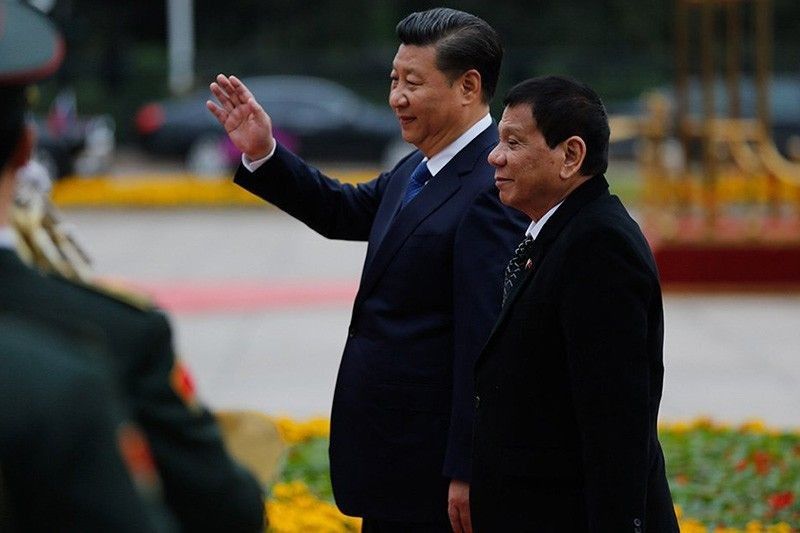Commentary: Dangers, opportunities in China’s Belt and Road Initiative

When President Rodrigo Duterte came back from his state visit to China in October 2016, his Cabinet members touted the US$ 24 billion in investment and credit line pledges that they have supposedly secured from their Chinese counterparts. A few days after their visit, Trade and Industry Secretary Ramon Lopez disclosed a list of 26 different deals signed by the two parties.
While none of the projects from this list have progressed so far, it has alarmed pundits who pointed out that the deals had been forged with Chinese companies with dubious track records. After all, the Philippines is still smarting from botched projects—the NorthRail project and the National Broadband Network deal with ZTE Corp.—brokered over a decade ago.
During Duterte’s second visit to China this year, his preference for the country became indubitably clear as he declared that China is a very important ingredient in his infrastructure drive. “More than anybody else at this time of our national life, I need China,” he announced.
The present administration’s overtures towards China has spurred endless debate on China’s increasing role in our development agenda, especially in bridging the gap in the administration’s flagship infrastructure program.
In line with keeping the discourse alive on this subject, the Stratbase ADR Institute recently hosted a roundtable forum where Richard Heydarian, a non-resident fellow of the think tank, presented his special study “The 21st Century Silk Road: Perils and Opportunities of China’s Belt and Road Initiative.”
In his study, Heydarian observed that infrastructure development has become the new pivot of geopolitics. He commented that “power and influence is no longer measured by the military prowess or economic size,” but also by the country’s “ability to provide the necessary capital and technology for overhauling decaying or underdeveloped public infrastructure around the world.”
Under the helm of President Xi Jinping, China has committed to participating in furthering regional economic integration and in facilitating the process of building up infrastructure and connectivity. Towards this end, China launched the Belt and Road Initiative (BRI) in 2017, previously called the One Belt One Road Initiative, which seeks to connect Europe to Asia through various infrastructure projects that would encourage both physical connectivity and trade linkages.
As far as China is concerned, Heydarian noted, BRI’s objectives are aligned with its geopolitical goals including facilitating its long-term plans of developing landlocked hinterlands and underdeveloped regions; outsourcing internal productive glut and infrastructure overcapacity; assisting and promoting troubled state-owned enterprises; developing trading partners’ basic infrastructure to reverse anemic growth in global trade; gaining foothold across strategically located nations; locking in rare commodities key to Chinese long-term development; and globalizing Chinese technological and industrial standards across emerging markets.
Of course, the BRI is not without its risks. As Heydarian pointed out, Chinese investments may further weaken the institutions of some of its beneficiaries, especially those where transparency and accountability are already lacking. For a minority of beneficiaries with low credit ratings, Chinese investments may put them in danger of falling into a debt trap.
On the other hand, for other countries like the Philippines that are trying to play catch up to fill its infrastructure deficit, the BRI will provide a necessary and much-needed support to fast-track the implementation of its infrastructure projects. Heydarian, however, warns that these investments will have to be “welcomed with cautious embrace by beneficiaries.”
So far, the National Economic and Development Authority (NEDA) Board, chaired by the president, has already approved some projects that China has committed to finance, such as the Chico River Pump Irrigation Project, the New Centennial Water Source-Kaliwa Dam Project, the South Line of the North South Railway, and most recently, the Subic-Clark Railway. China has also provided grants for the construction of two bridges across the Pasig River—the Binondo-Intramuros and Estrella Pantaleon Bridge.
To quell concerns regarding Chinese loans, the country’s economic managers, for their part, have assured us that they have heeded lessons from our past experiences and have promised us that adequate safeguards will be in place. For example, the government released a memorandum last year that Chinese-financed projects, regardless of amount, shall require approval of the Investment Coordination Committee.
As always, our top bureaucrats must exercise vigilance and due diligence in evaluating not only Chinese financing but all loans from different development partners and ensure that these are in our country’s best interest.
Weslene Uy is a senior economic research analyst of think thank Stratbase ADR Institute, a partner of Philstar.com.
- Latest




























